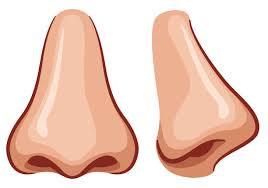As humans our sense of smell is powerful enough to create emotions, perceptions, and even memories. Scents, both pleasant and unpleasant, can evoke a strong response and can remind us of places we’ve been and experiences we had there. When we visit public buildings like office buildings, hotels, gyms, restaurants, airports, and theaters — unpleasant odors create the perception that they are not clean, even if they appear spotlessly clean and maintained.
The last thing you want is for your facility to be associated with bad odors. A nasty odor can cause a negative first impression for customers or potential tenants and create a nuisance for employees. Getting rid of unpleasant smells is part of creating an overall cleaner, safer environment for everyone who walks into your facility. We all know how undesirable it is to be in a space that doesn’t smell good.
When dealing with buildings, some of the main sources of bad smells are:
- Restrooms: Dirty sinks, toilets/urinals, and floors may all cause negative smells.
- Offices and meeting rooms: Garbage left for long periods of time and high-traffic carpet and upholstery are the most common sources of odor in offices and meeting rooms.
- Hallways, stairwells, and elevators: In multifamily buildings and hotels, smells from food, smoking, or old garbage can easily fill hallways and odors can easily build in carpets.
- Hotel rooms: Hotel rooms can become the perfect host for nasty odors. From trash to carpet and upholstery spills, there are several potential odor sources.
- Industrial kitchens: Stoves, ovens, smoke, and built-up grease can all cause odors in industrial kitchens.
- Exterior areas: Garbage collection area odors, or maybe you’re dealing with homeless urine odors, they can quickly build outside a facility.
- Gyms: Bacteria frequently causes odors. Sweat and mold growth within a space may also contribute to bad smells.
- Garbage Compactors: Bags of decaying garbage sitting around waiting to be crushed and liquids that are squeezed out of garbage can be a particularly pungent odor source.
- HVAC systems: Bacteria easily grows on HVAC coils. If there is build up, it may also cause an odor that fills the entire building.
So what can we do about it?
- Creating better airflow can often help with odors, but will not remove them at the source and it can be impossible to leave windows open in a public space or during in-clement weather.
- Reducing bacteria that grow in warm moist areas helps keep mold from growing and causing a musty smell.
- Odor removal products can help keep buildings odor free.
There are many types of products for odor removal. Some deodorizers mask odors, while others eliminate them. Choosing the right type can play a big part in keeping odors to a minimum.
Carpet deodorizers are easy to use, most simply need to be sprinkled on the carpet before being vacuumed up. Solid air fresheners can be placed around the office and other areas that can harbor odors. Bacteria and enzyme products remove tough odors at the source, and pairing agents are chemicals that actually bond with the malodor to create a new odorless molecule.
Having odor removal products around for your employees to use will help create a valuable pleasant first impression for those who visit your facility. The best thing about industrial odor removal methods, besides being easy, is that they are effective. There are many solutions including automatic pumps with bacterial odor removal products for large, highly odorous or hard to reach areas.

